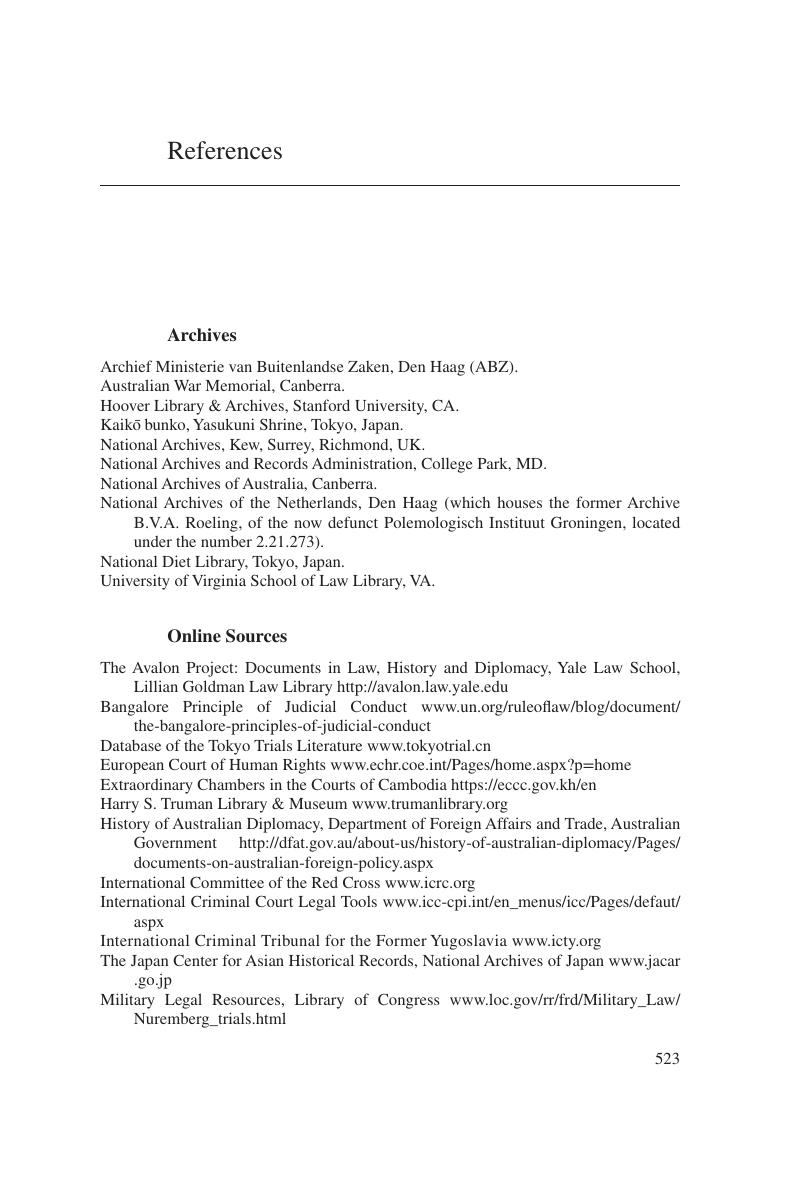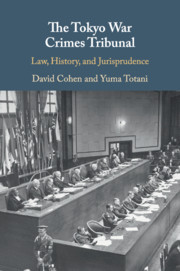Book contents
- The Tokyo War Crimes Tribunal
- The Tokyo War Crimes Tribunal
- Copyright page
- Contents
- Acknowledgments
- Note to the Reader on Translation, Sources, and Citation
- Introduction
- Part I The Allied War Crimes Policy, the Indictment, and Court Proceedings
- Part II The Law and Jurisprudence of the Judgments and Separate Opinions
- Conclusion
- References
- Index
- References
References
Published online by Cambridge University Press: 19 November 2018
- The Tokyo War Crimes Tribunal
- The Tokyo War Crimes Tribunal
- Copyright page
- Contents
- Acknowledgments
- Note to the Reader on Translation, Sources, and Citation
- Introduction
- Part I The Allied War Crimes Policy, the Indictment, and Court Proceedings
- Part II The Law and Jurisprudence of the Judgments and Separate Opinions
- Conclusion
- References
- Index
- References
Summary

- Type
- Chapter
- Information
- The Tokyo War Crimes TribunalLaw, History, and Jurisprudence, pp. 523 - 534Publisher: Cambridge University PressPrint publication year: 2018



